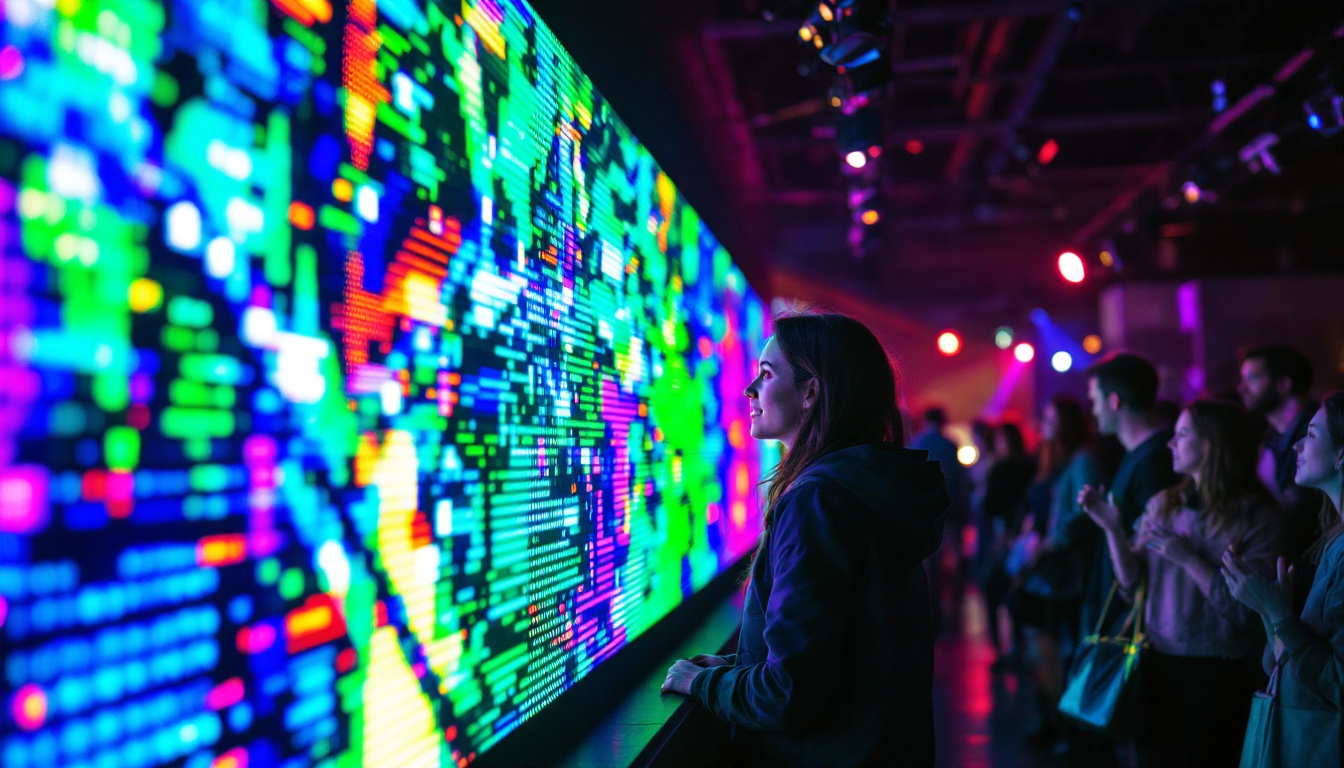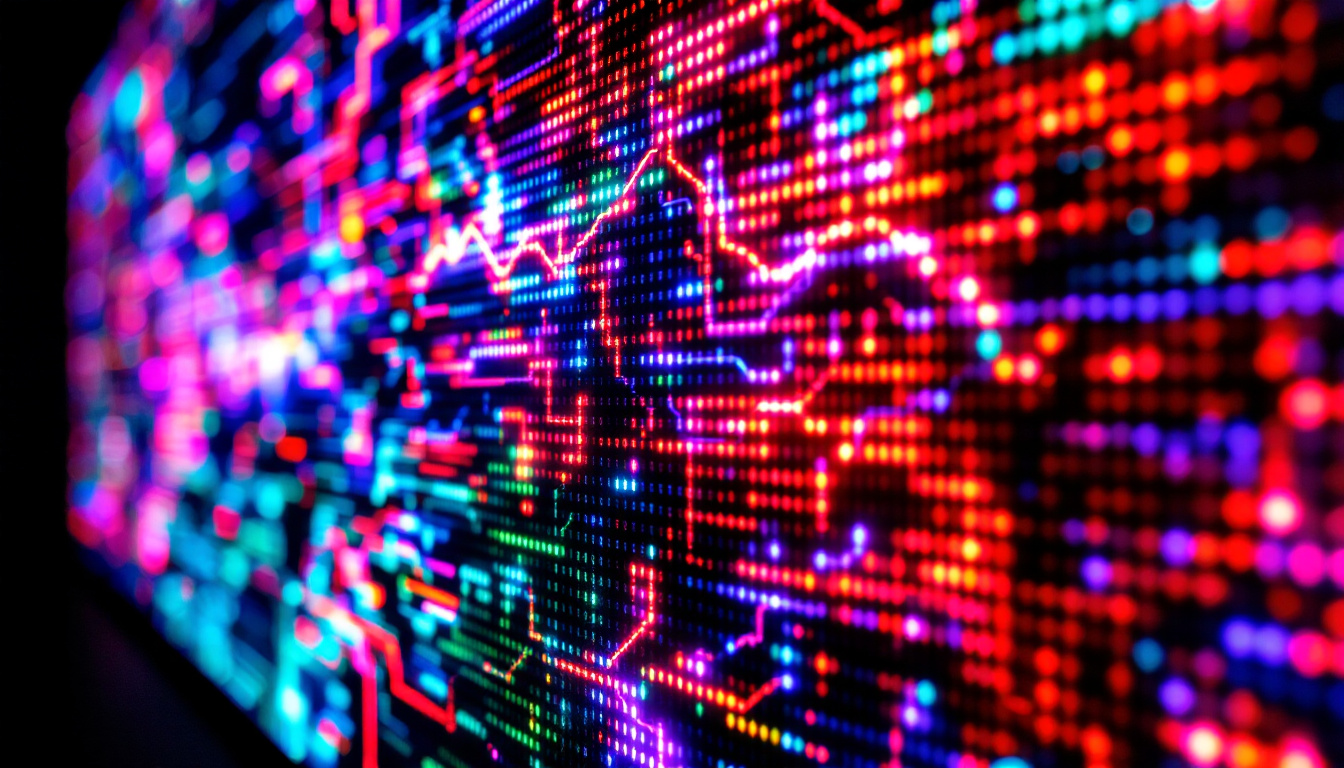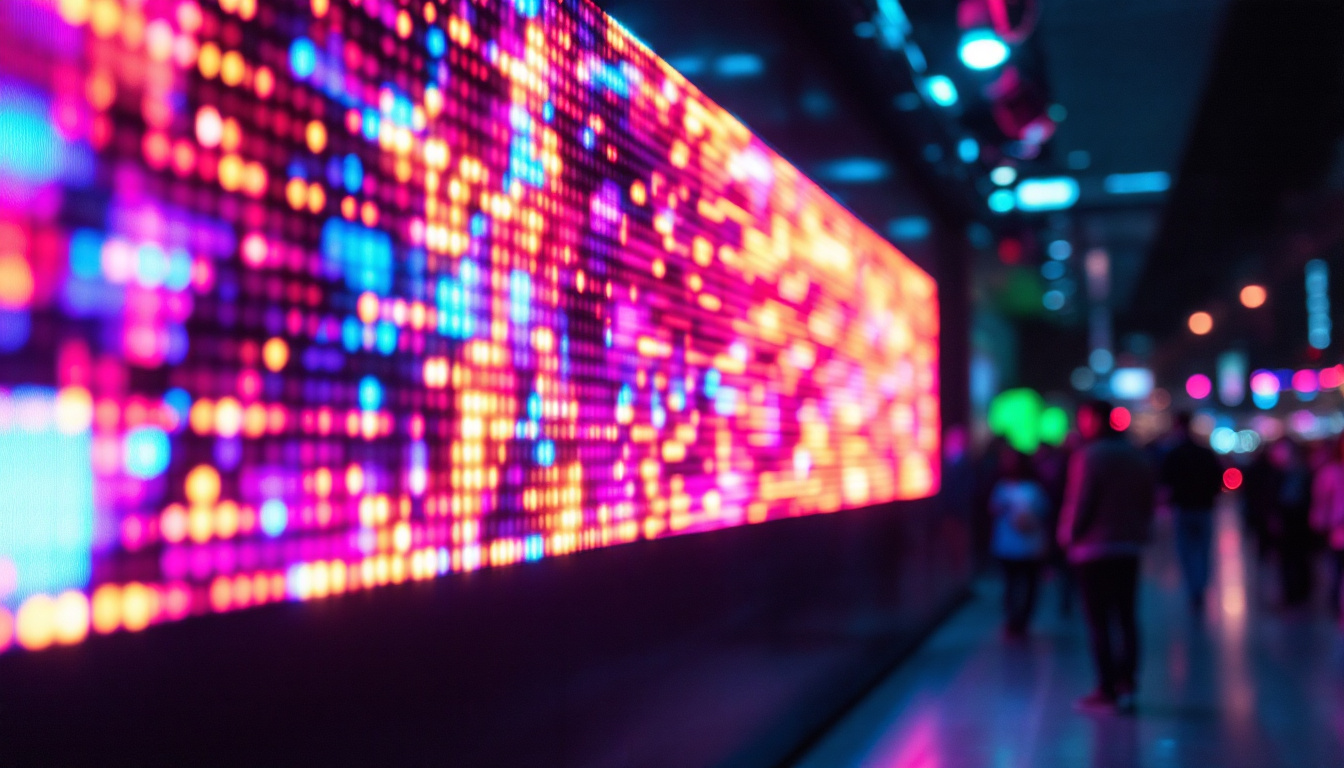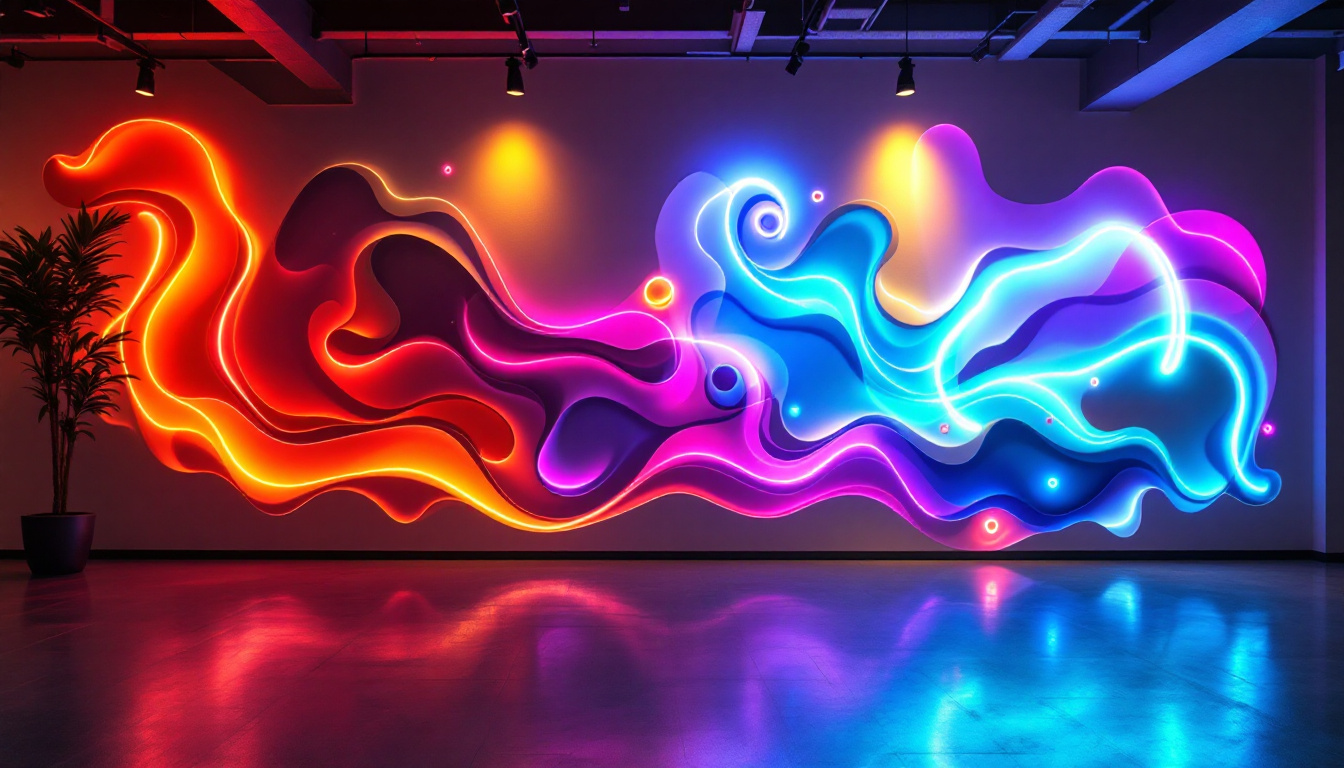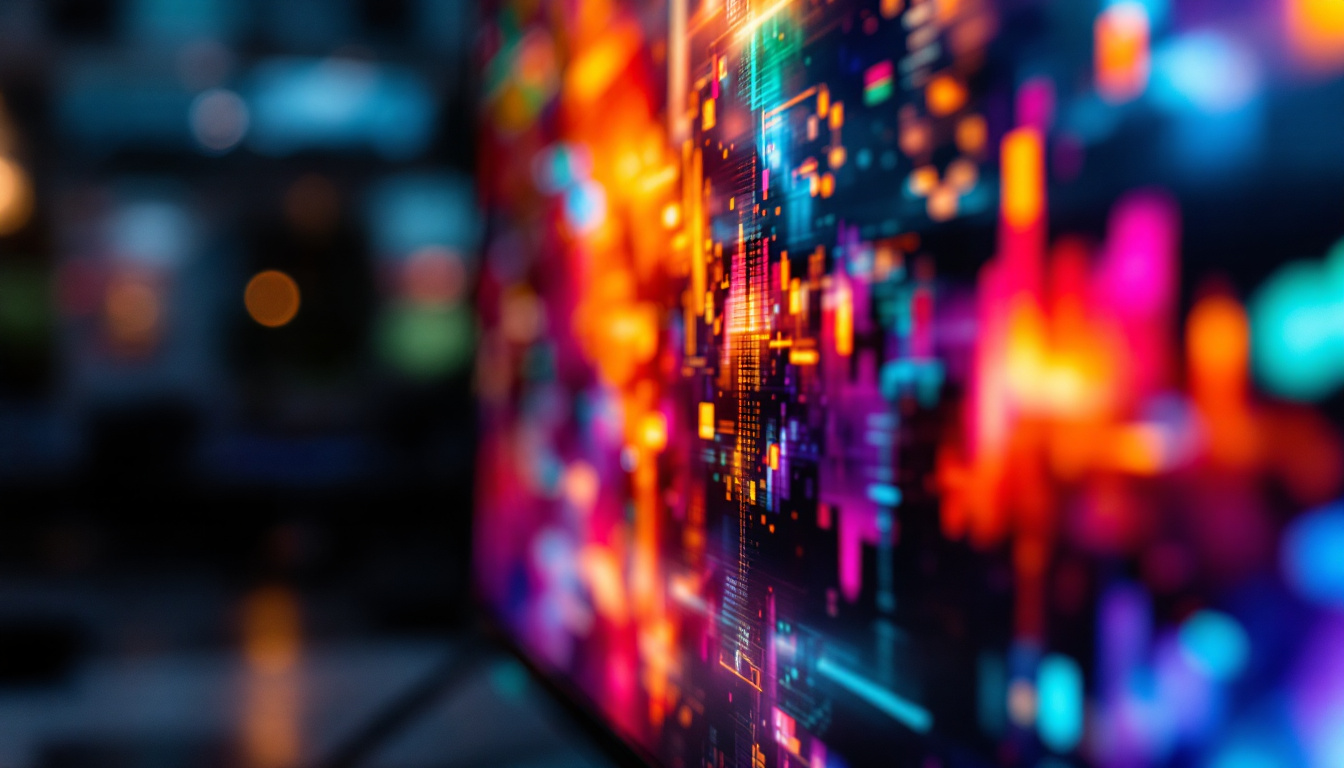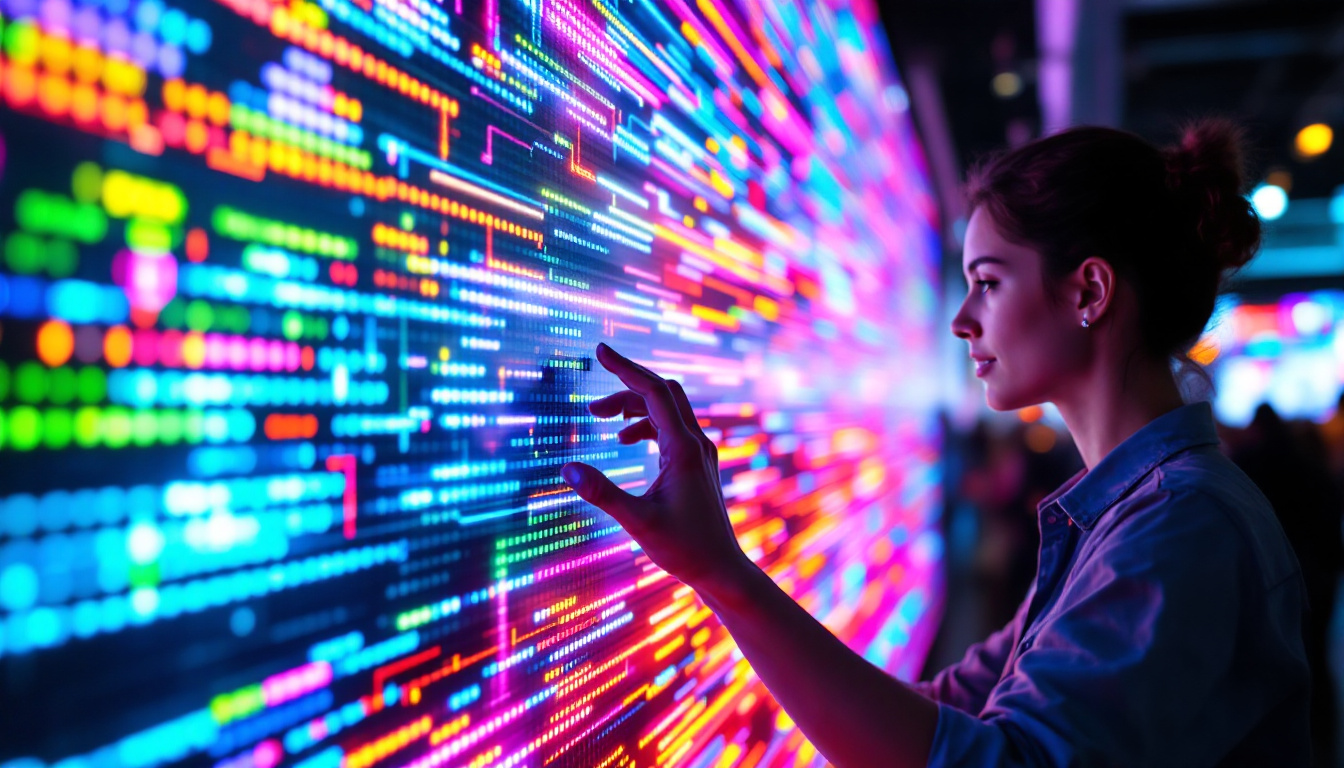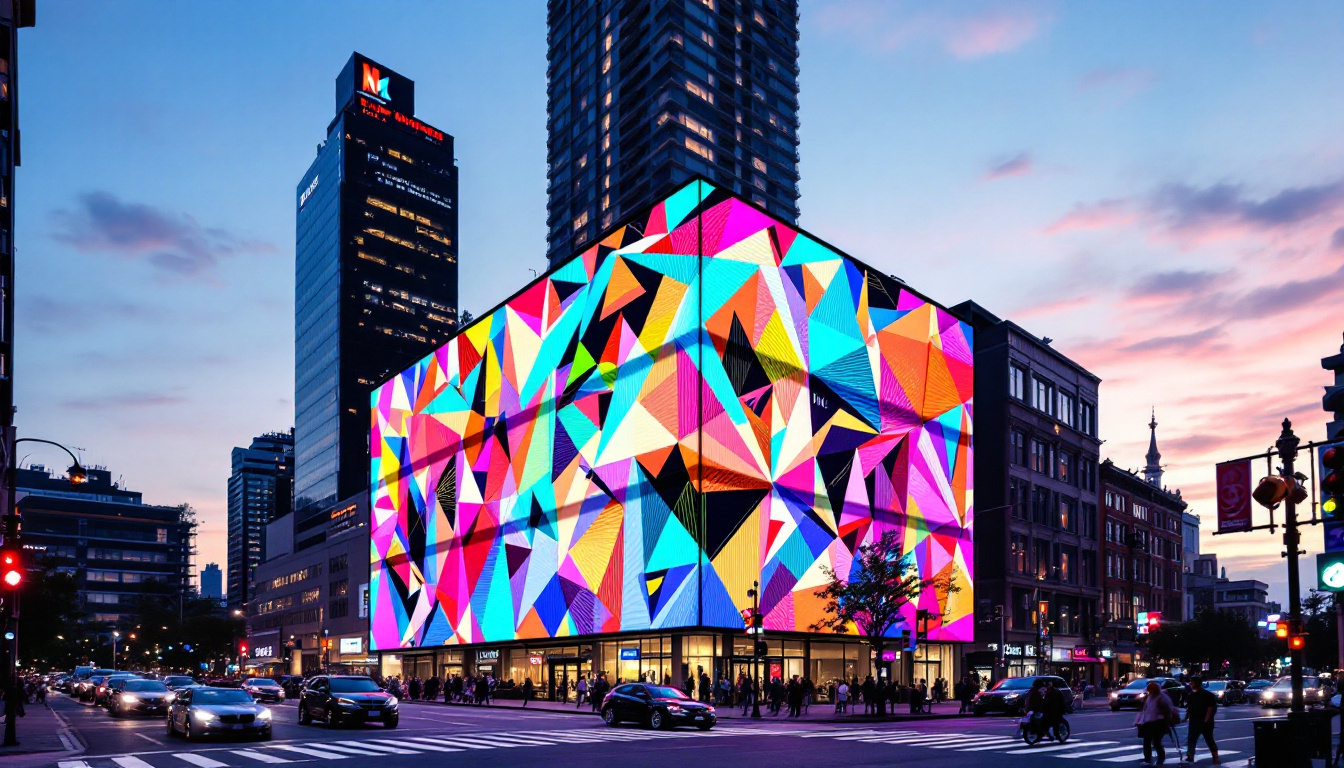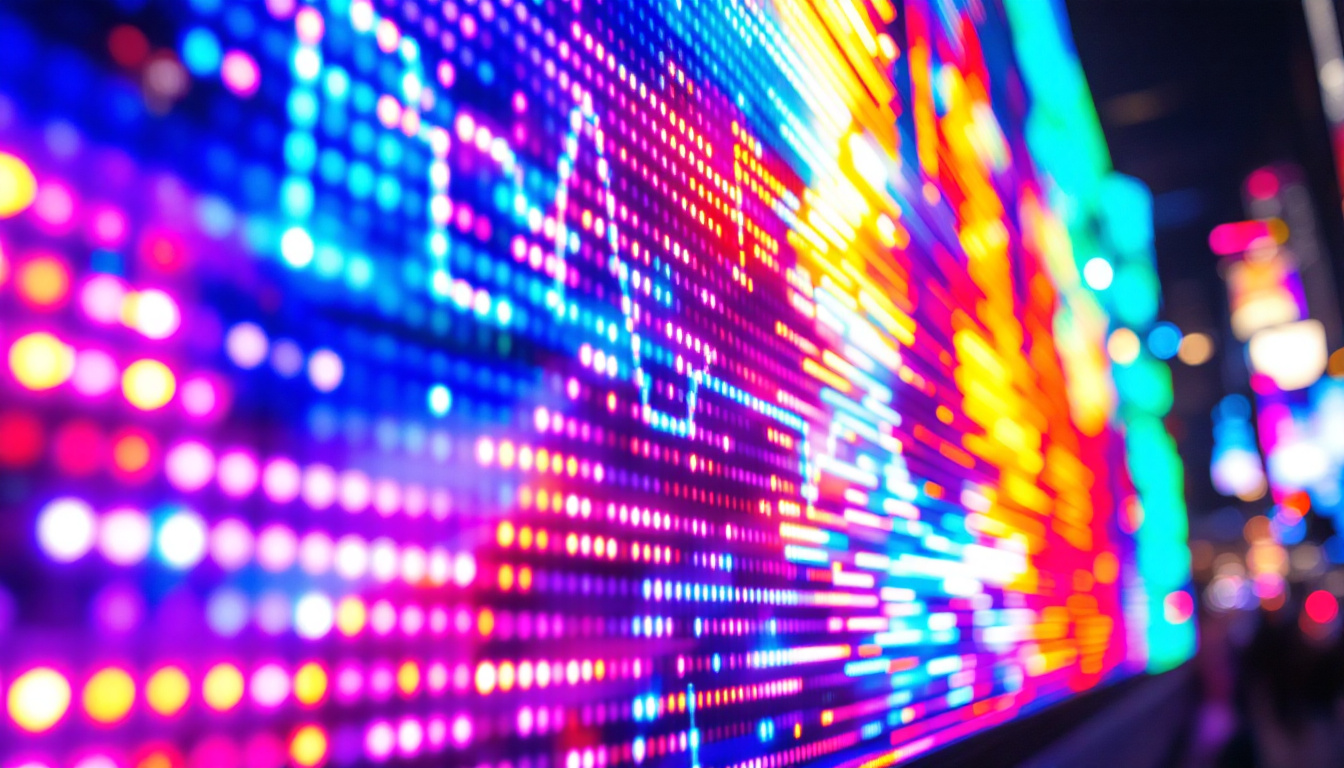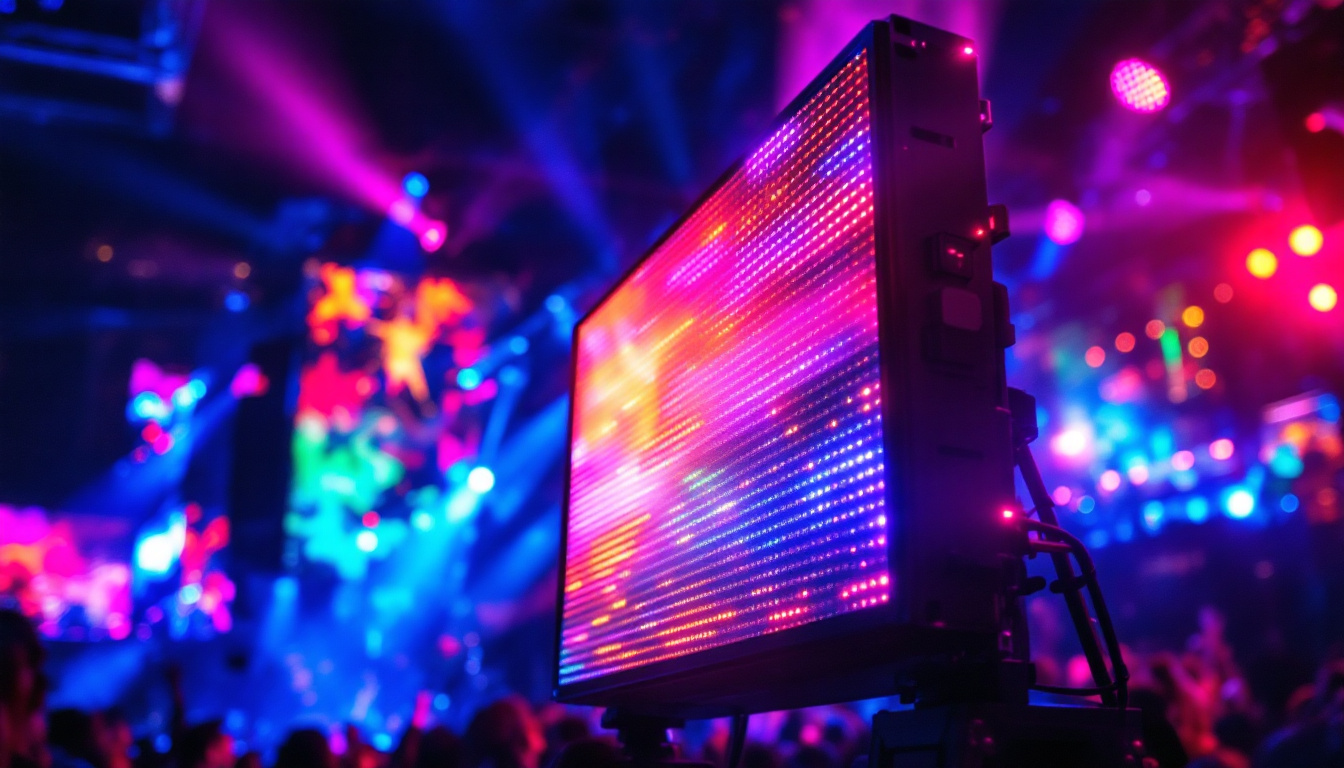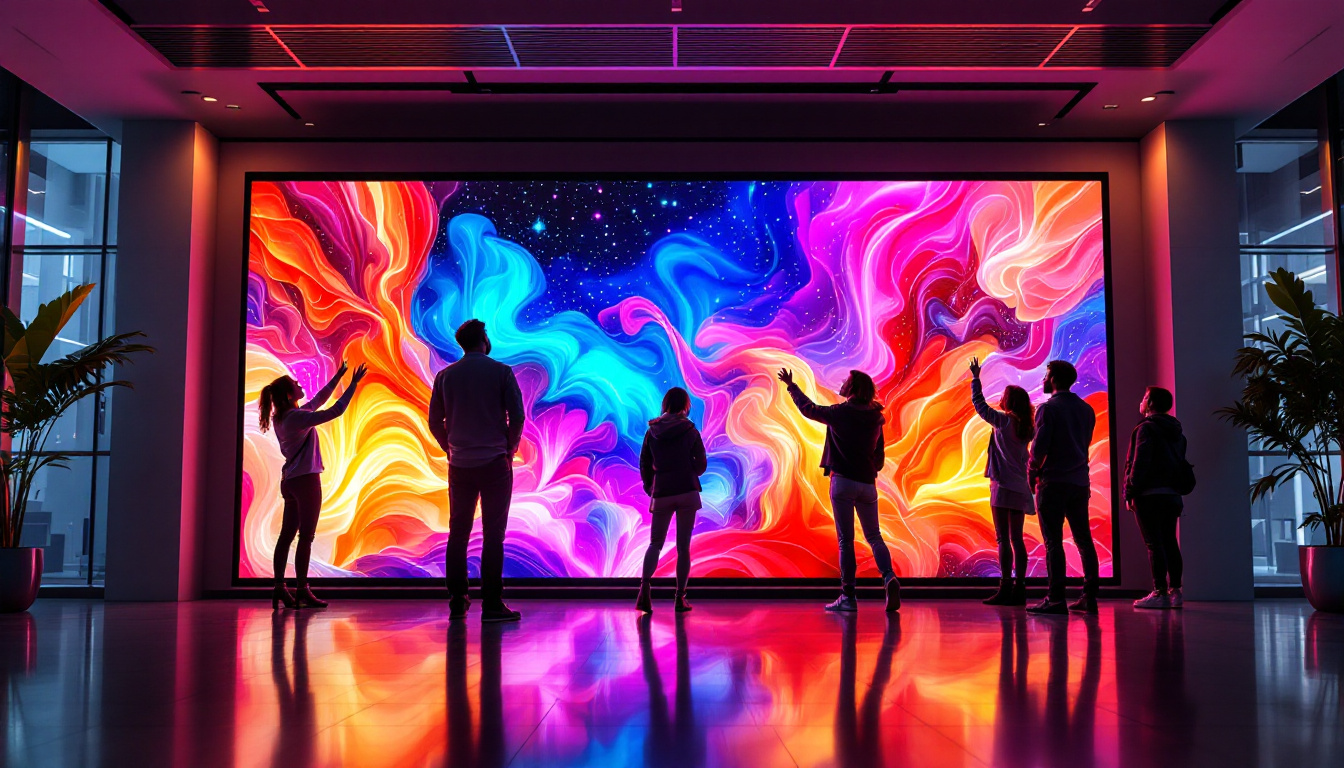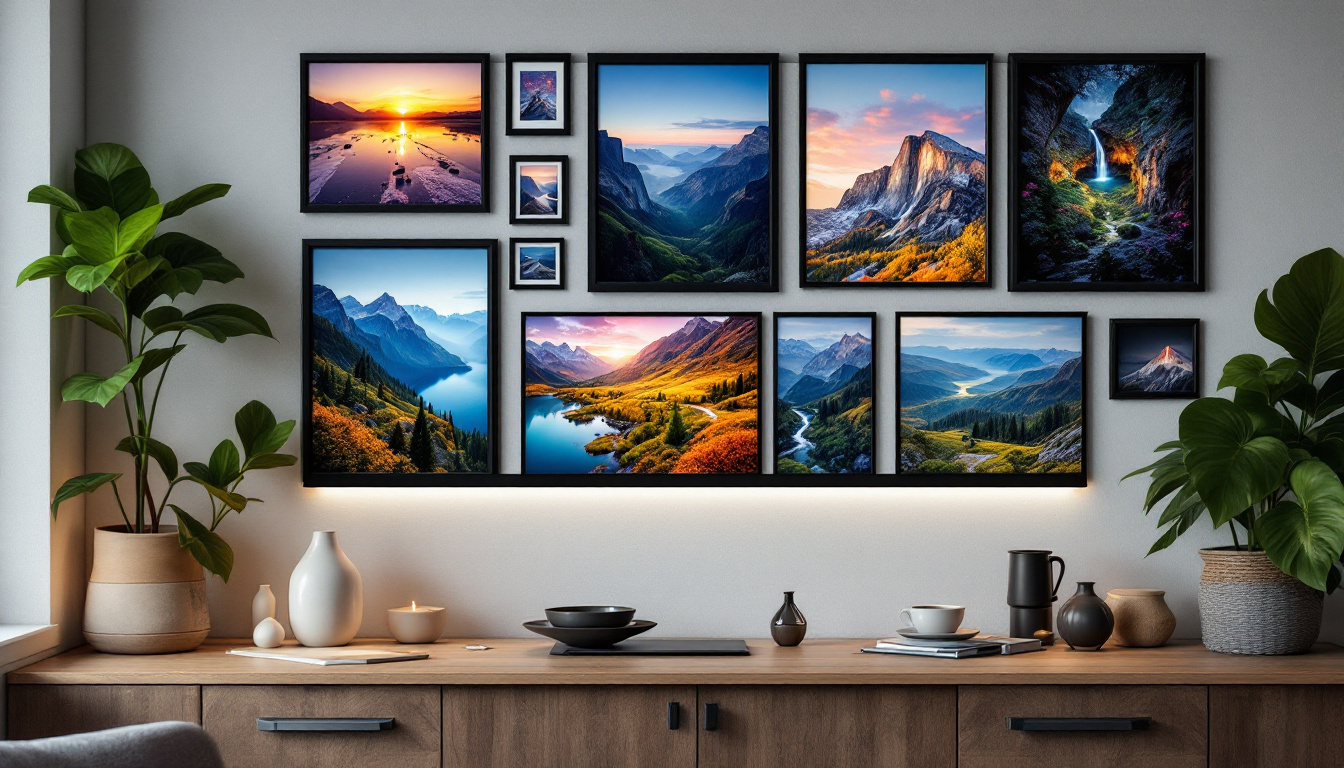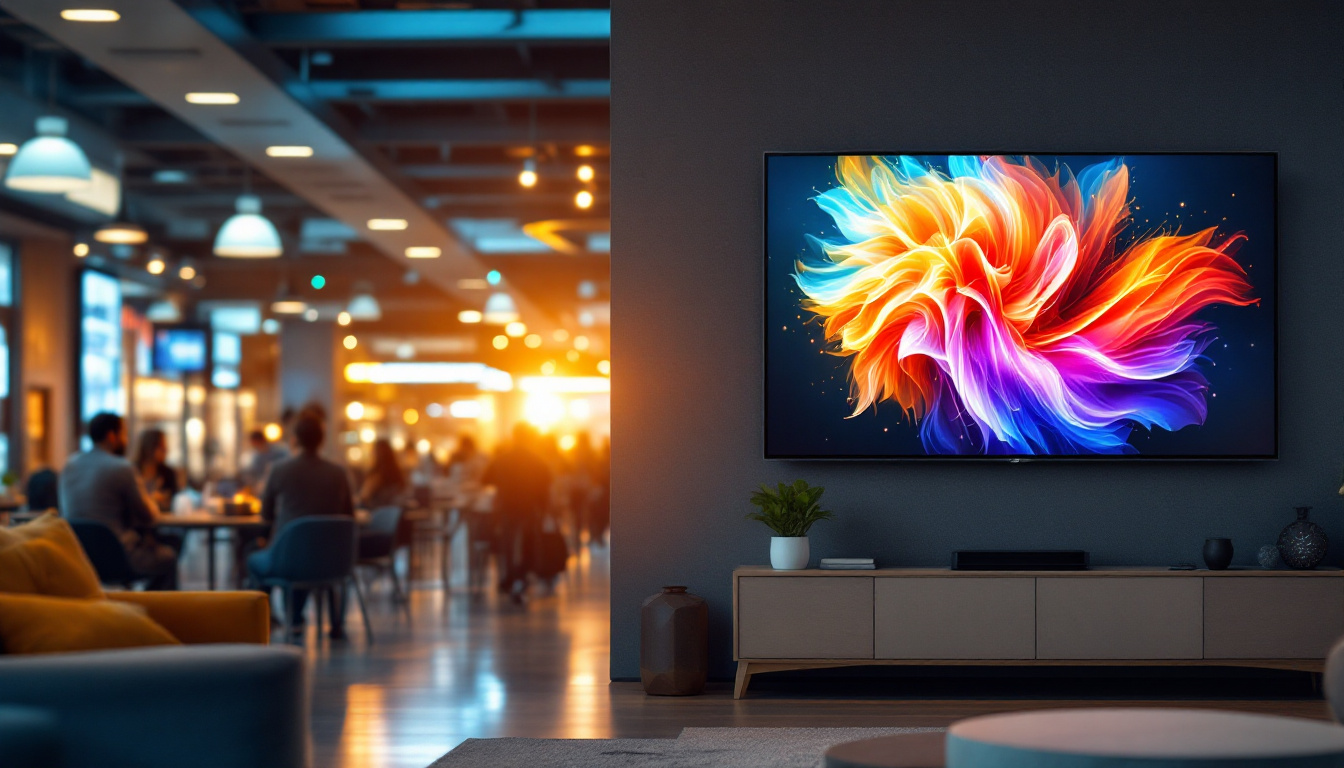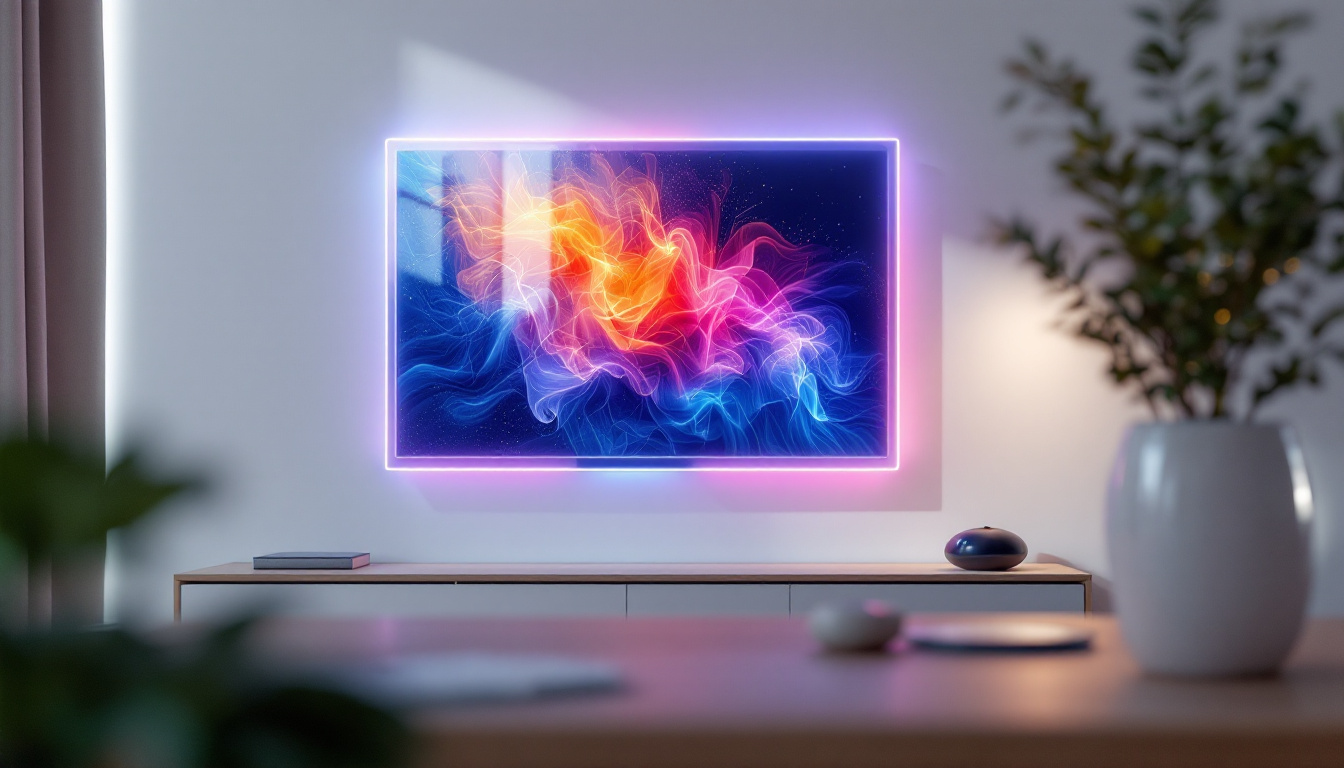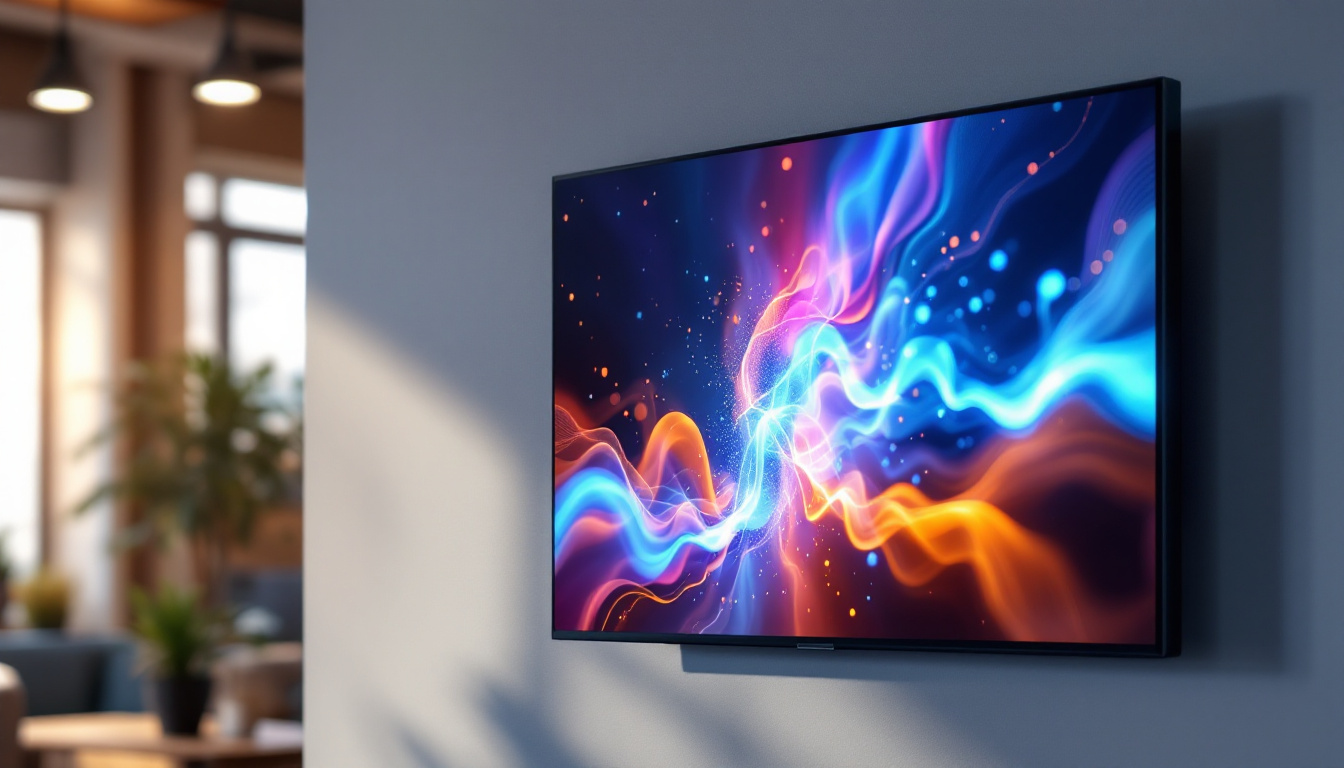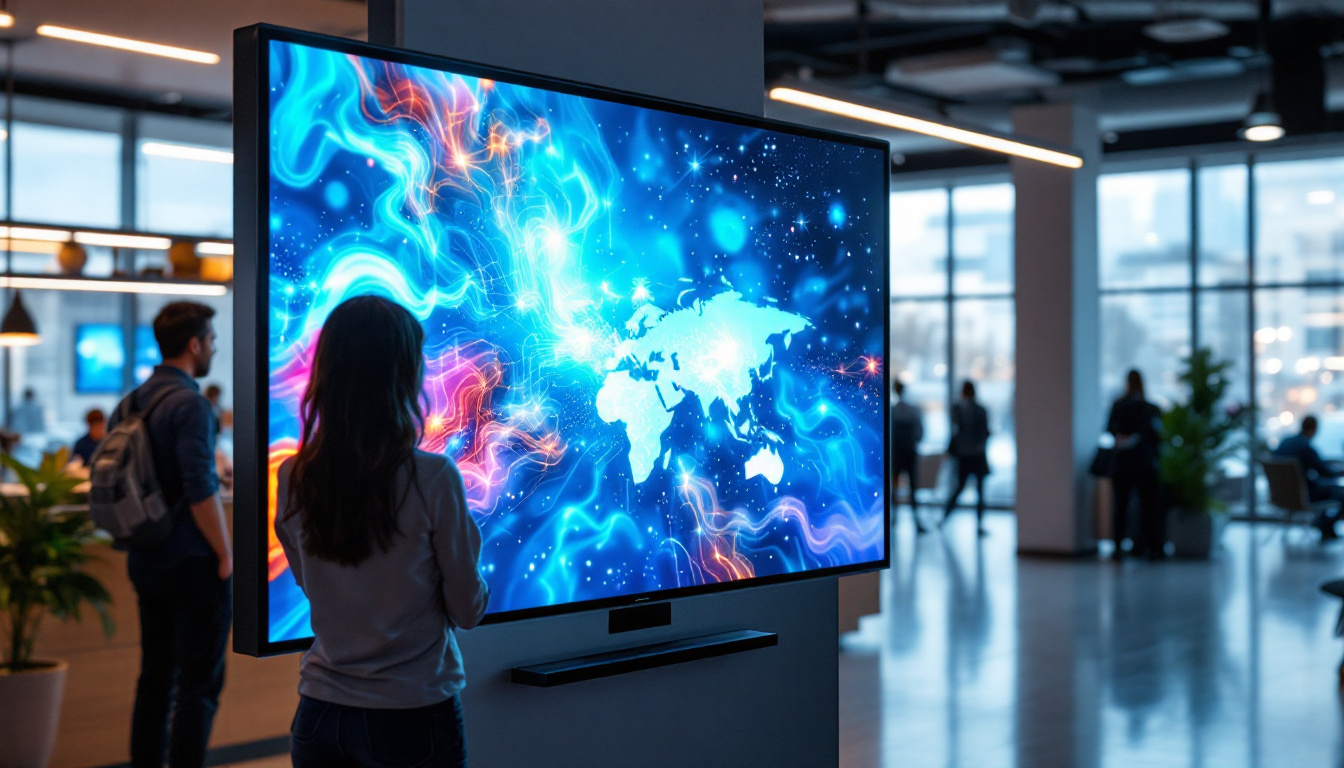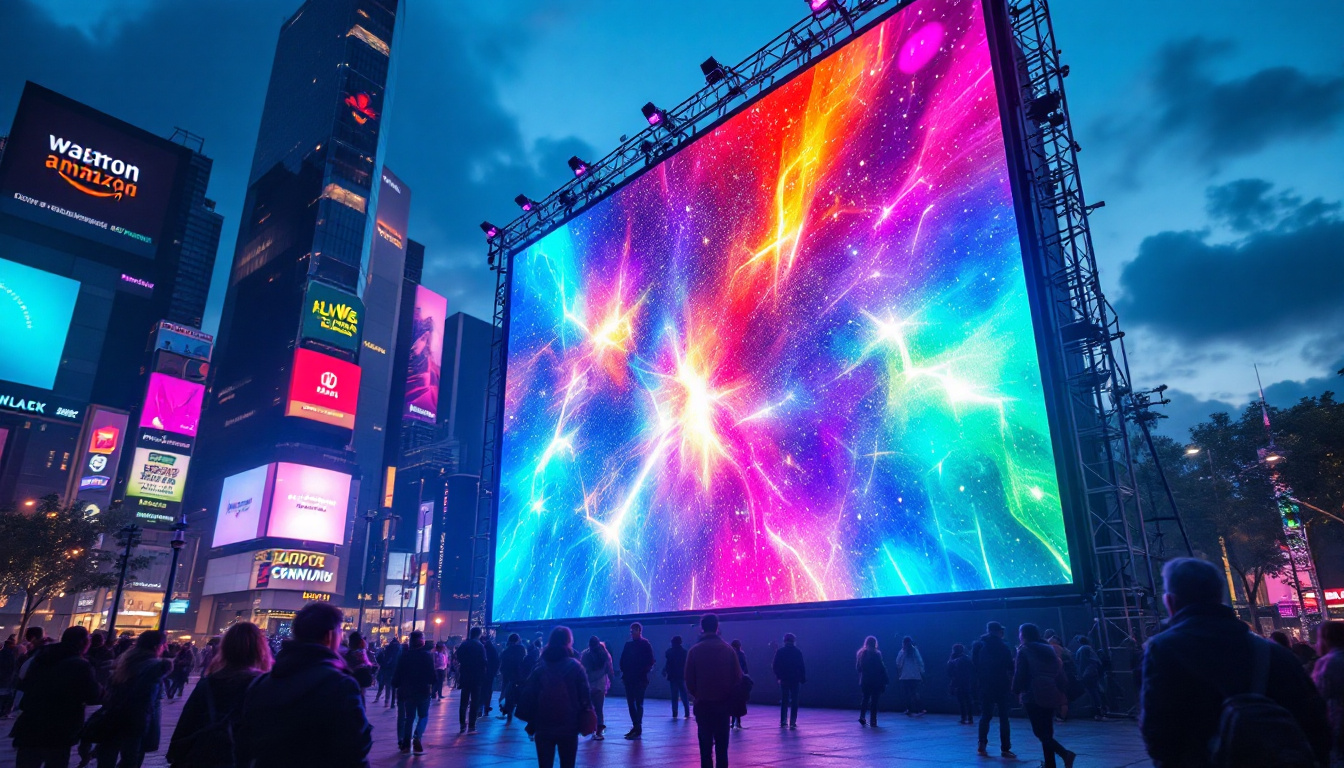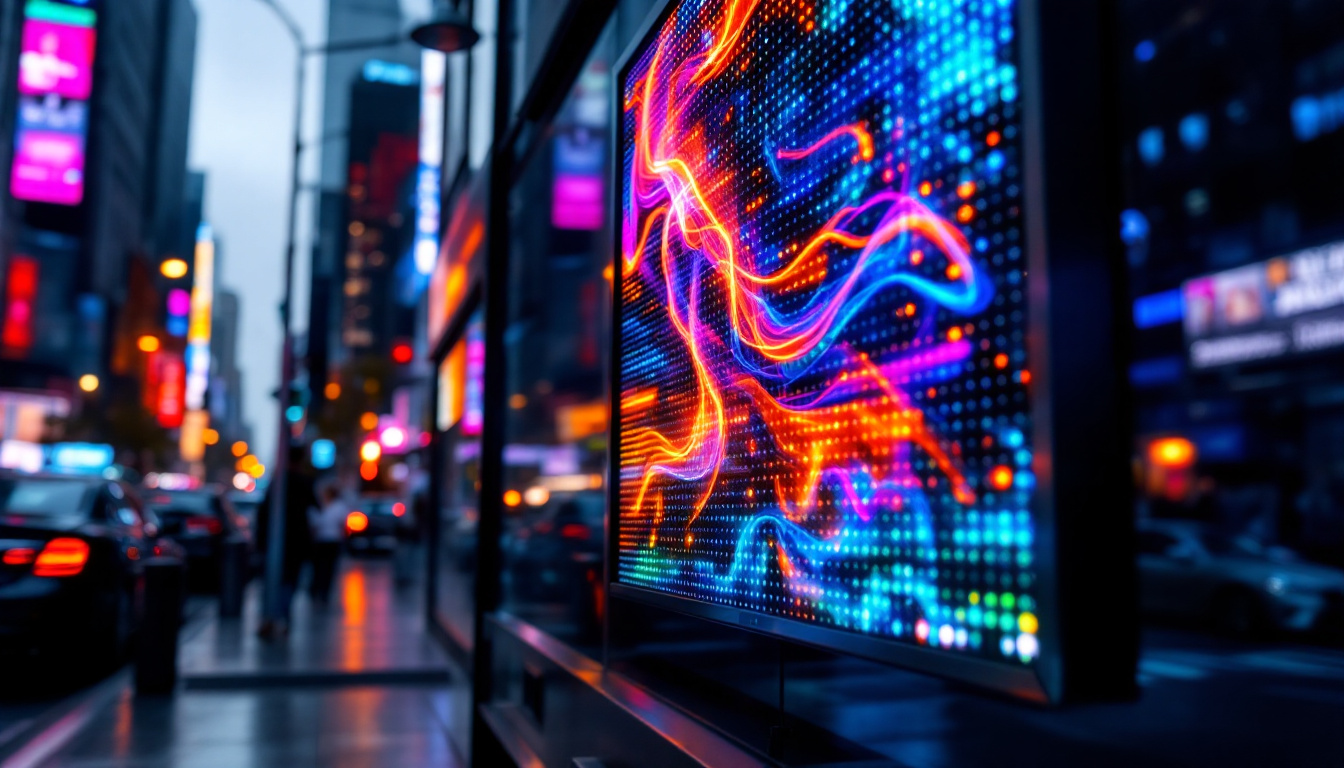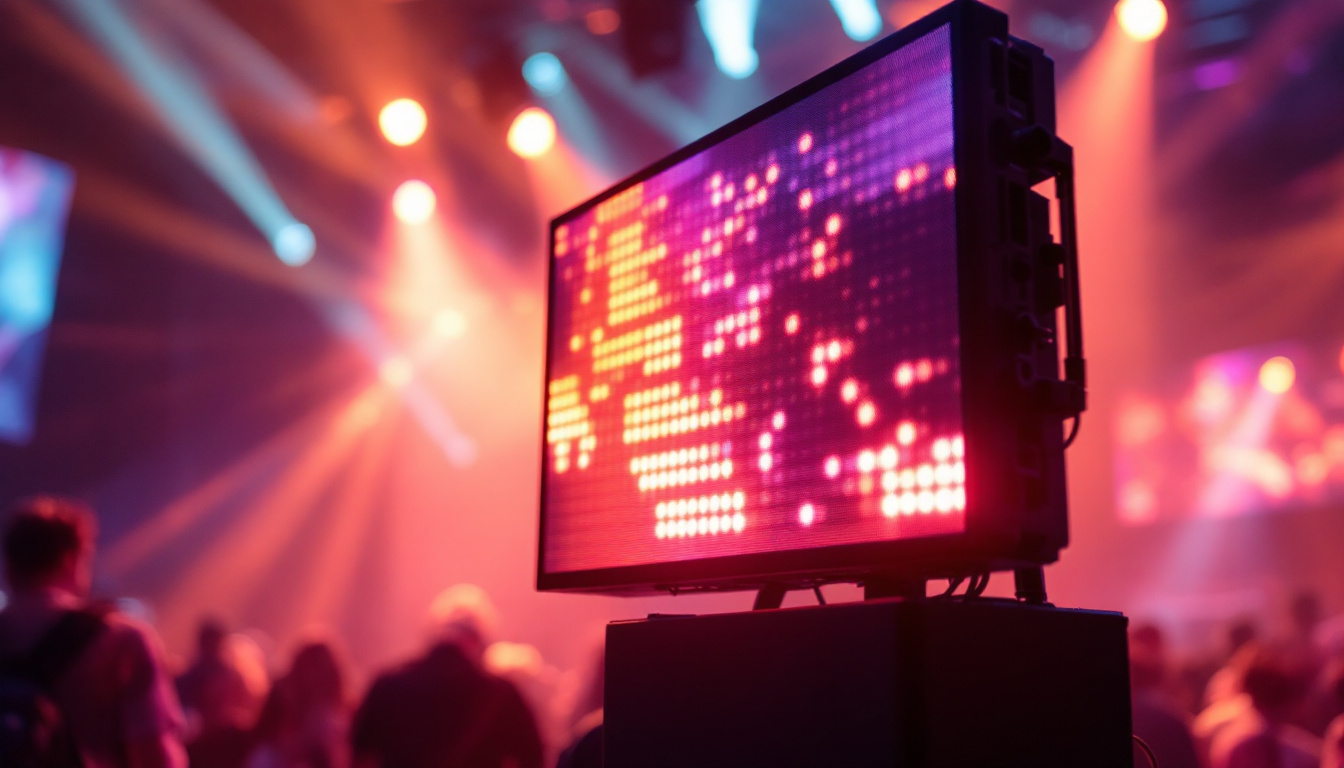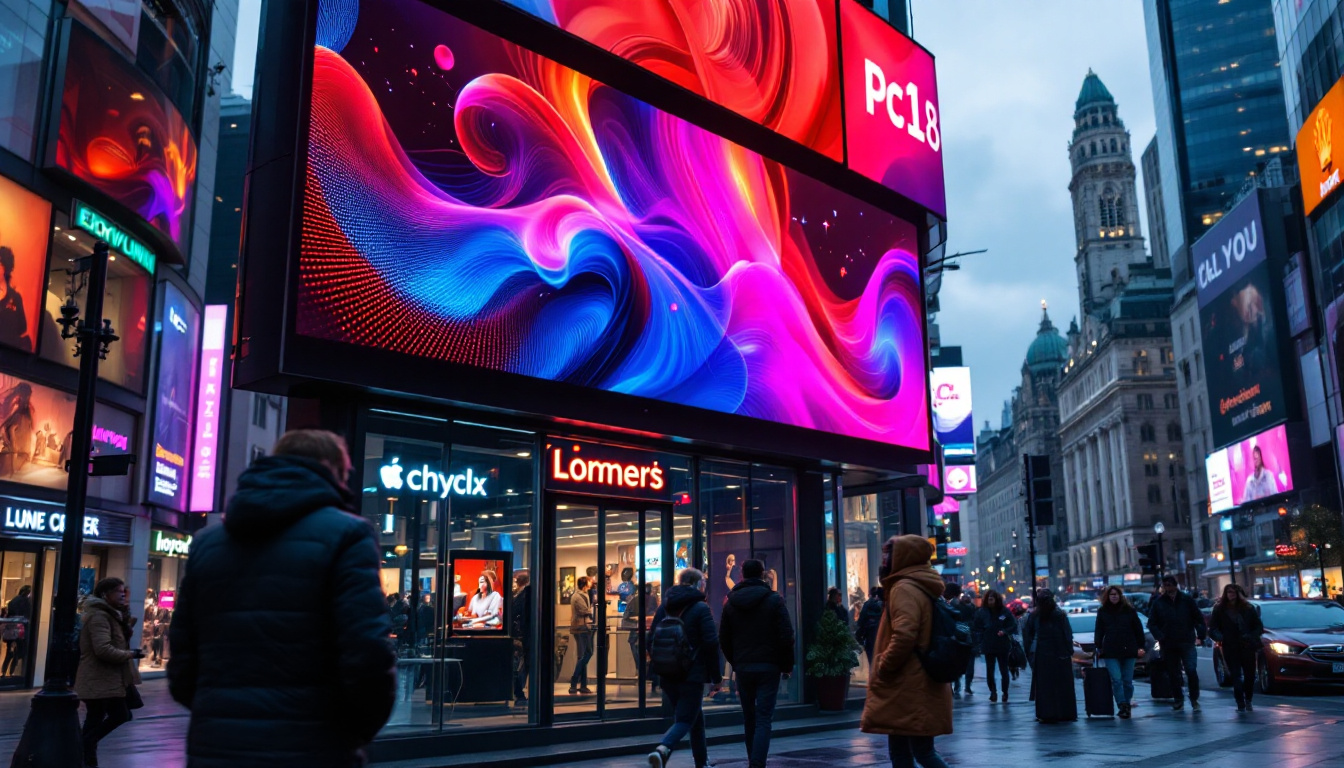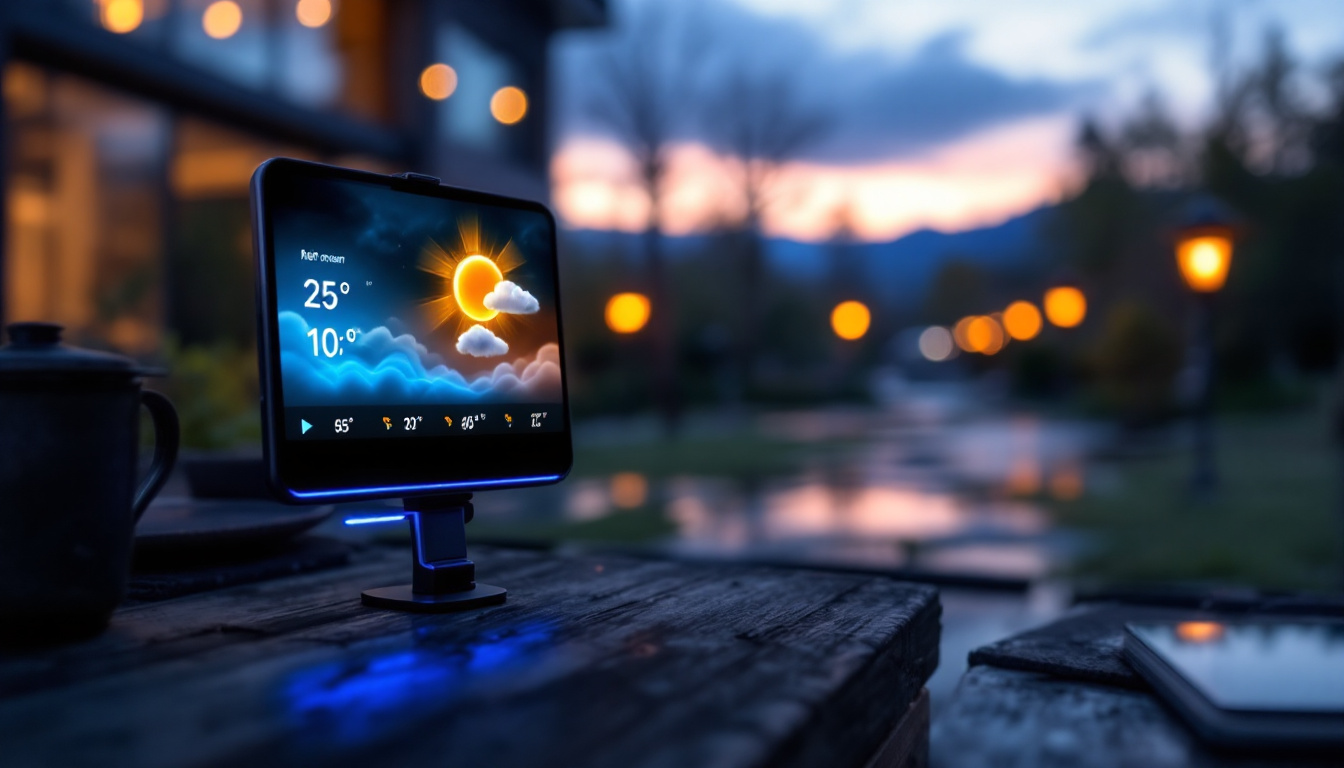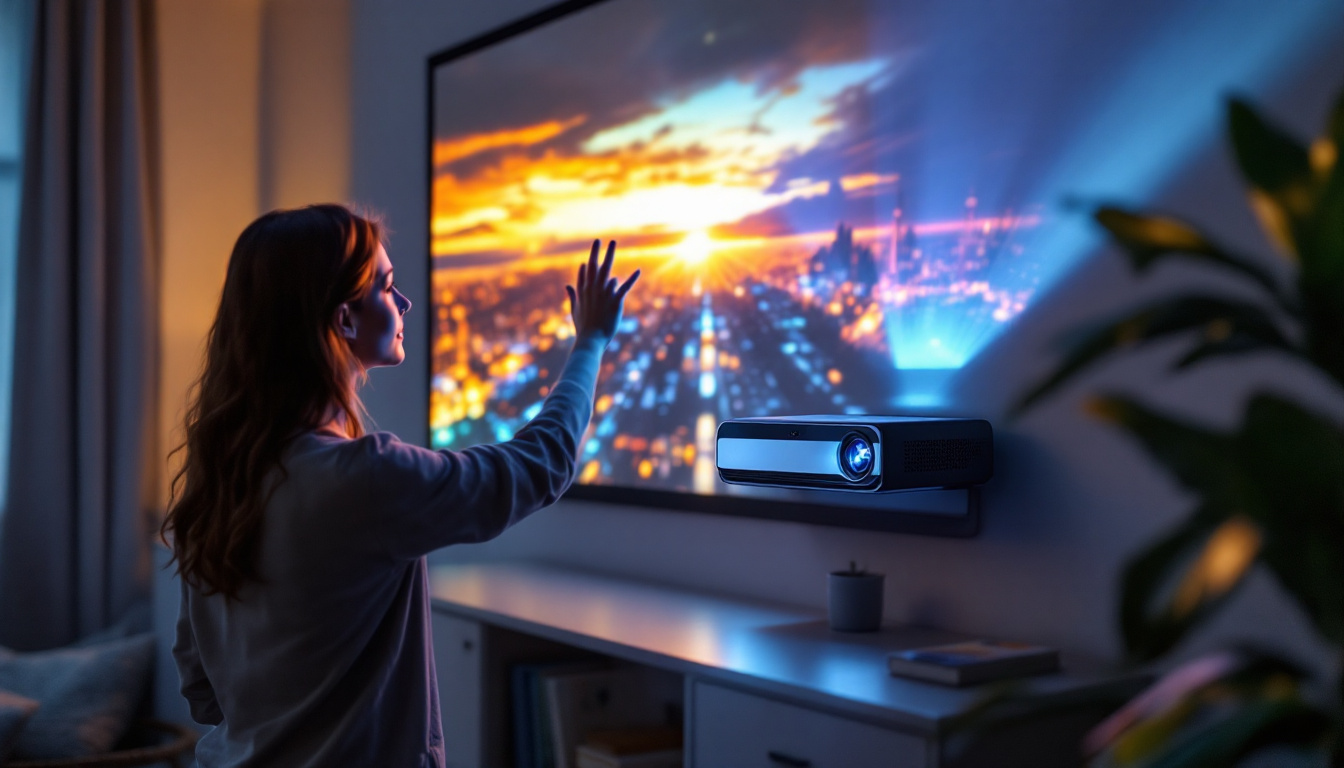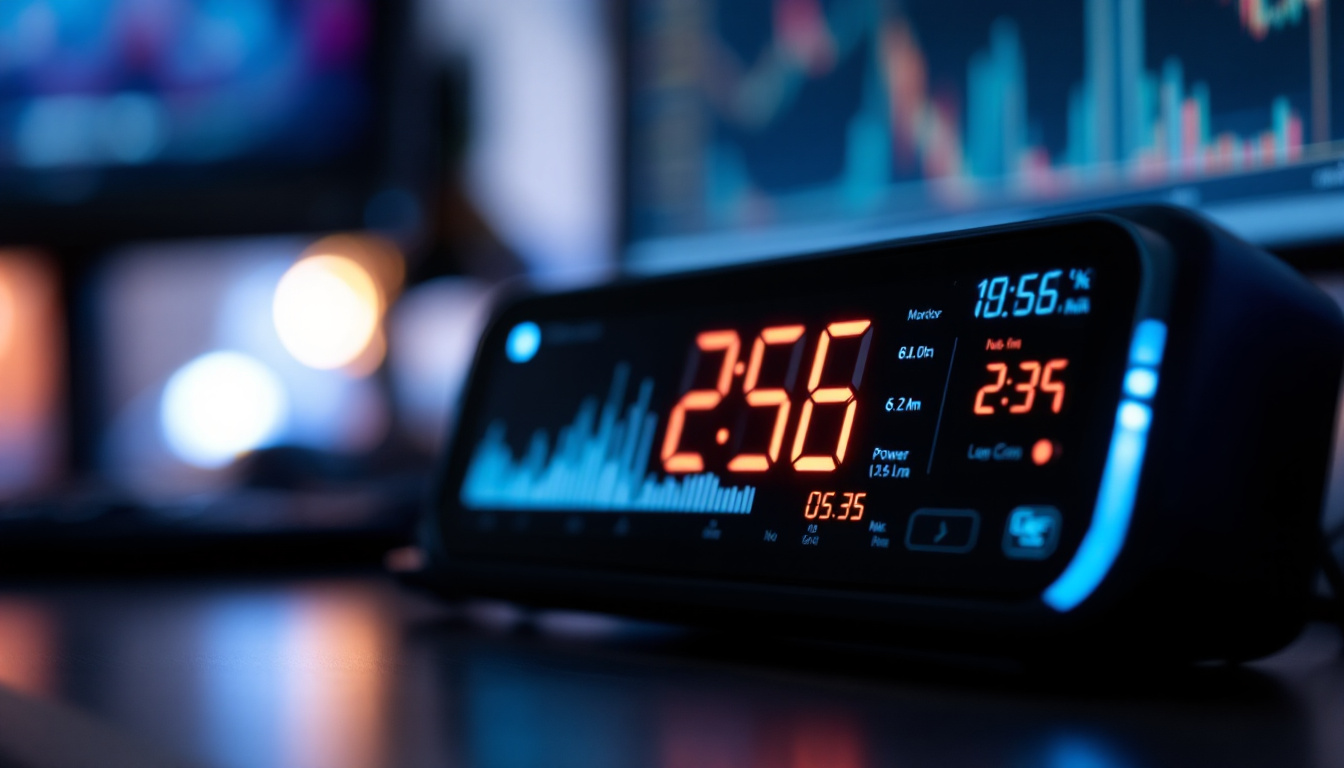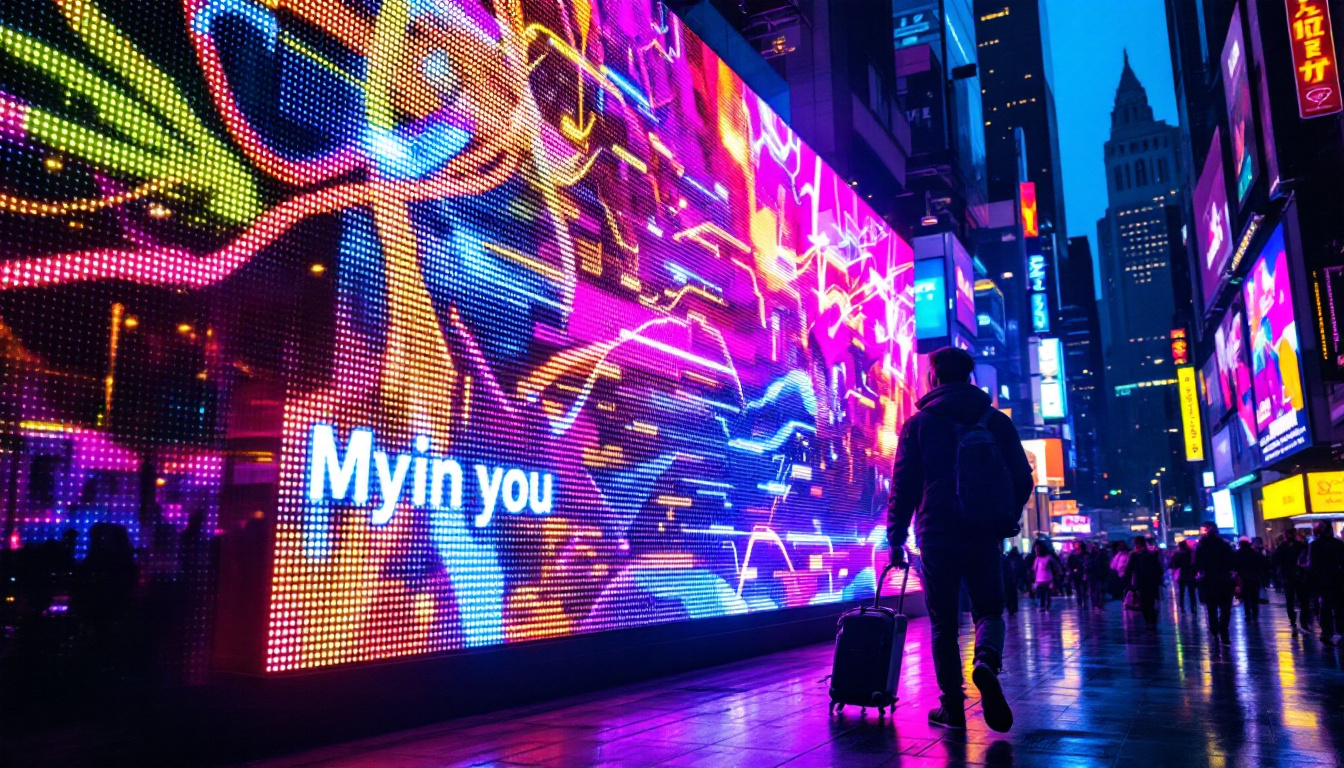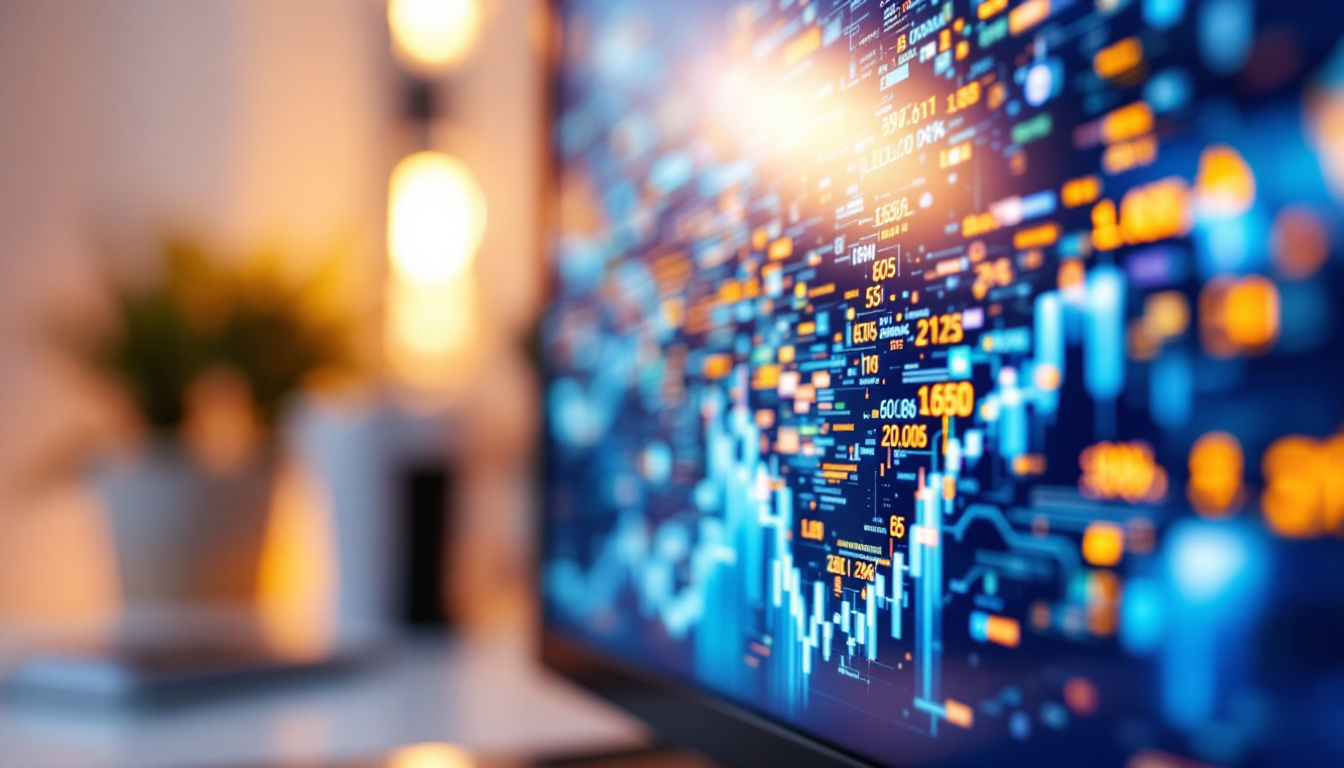In the fast-evolving world of technology, LED displays have emerged as a significant player, transforming the way information is conveyed visually. From large-scale outdoor billboards to small screens in smartphones, the versatility and efficiency of LED technology have made it a preferred choice across various industries. This article delves into the intricacies of LED displays, examining their components, applications, and the factors that contribute to their effectiveness.
Understanding LED Technology
Light Emitting Diodes (LEDs) are semiconductor devices that emit light when an electric current passes through them. This technology has revolutionized display systems due to its efficiency, longevity, and ability to produce vibrant colors. Unlike traditional incandescent bulbs, LEDs consume significantly less power and have a much longer lifespan, making them an environmentally friendly option.
How LEDs Work
The fundamental operation of an LED involves the movement of electrons within a semiconductor material. When an electric current flows through the diode, electrons recombine with holes in the semiconductor, releasing energy in the form of photons. The color of the light emitted depends on the materials used in the semiconductor. For instance, gallium nitride produces blue light, while gallium phosphide can emit green light.
LEDs can be combined in various configurations to create displays of different sizes and resolutions. By adjusting the intensity of the current flowing through each LED, it is possible to produce a wide range of colors and brightness levels, allowing for dynamic and engaging visual presentations.
Types of LED Displays
LED displays come in various types, each suited for specific applications. The most common types include:
- Direct View LED (DVLED): These displays use individual LEDs to create images and are often used in large outdoor billboards and indoor screens.
- LED Backlit LCD: This type combines traditional LCD technology with LED backlighting, enhancing brightness and color accuracy.
- Organic LED (OLED): OLED displays use organic compounds to emit light, offering superior color quality and contrast ratios, making them popular in high-end televisions and smartphones.
Applications of LED Displays
LED displays are utilized across a wide range of sectors, showcasing their versatility and adaptability. From advertising to entertainment, their applications are virtually limitless.
Advertising and Marketing
One of the most prominent uses of LED displays is in advertising. digital billboards and signage can capture the attention of passersby with vibrant colors and dynamic content. Advertisers can change messages in real-time, allowing for targeted campaigns that can be adjusted based on time of day or audience demographics. This flexibility enhances engagement and can lead to higher conversion rates.
Furthermore, LED displays can be integrated into various environments, such as shopping malls, airports, and stadiums, providing information and entertainment while promoting brands effectively. The ability to display high-resolution images and videos makes them an attractive option for marketers looking to make a lasting impression.
Entertainment Industry
The entertainment industry has also embraced LED technology, particularly in concerts, theaters, and sporting events. Large LED screens are often used as backdrops, providing stunning visuals that enhance the audience’s experience. These displays can be synchronized with music and performances, creating a multi-sensory experience that captivates viewers.
In addition, LED technology is increasingly being used in virtual reality (VR) and augmented reality (AR) applications, where high-resolution displays are crucial for immersive experiences. The ability to produce vivid colors and deep contrasts allows for more realistic simulations, further pushing the boundaries of entertainment technology.
Transportation and Public Information
LED displays play a critical role in transportation systems, providing real-time information to passengers. Train stations, bus stops, and airports utilize LED screens to display arrival and departure times, gate information, and other essential updates. This instant communication helps improve the overall travel experience by keeping passengers informed and reducing confusion.
Moreover, LED displays are increasingly being used in smart city initiatives, where they serve as information hubs for the public. These displays can provide updates on traffic conditions, weather alerts, and community events, fostering a more connected and informed society.
Advantages of LED Displays
The rise of LED technology in display systems can be attributed to several key advantages that set it apart from traditional display methods.
Energy Efficiency
One of the most significant benefits of LED displays is their energy efficiency. LEDs consume far less power compared to incandescent and fluorescent lights, resulting in lower electricity bills and reduced carbon footprints. This efficiency is particularly beneficial for large-scale installations, such as outdoor billboards, where energy costs can accumulate quickly.
Additionally, the long lifespan of LED technology—often exceeding 50,000 hours—means less frequent replacements, further contributing to sustainability efforts. This longevity not only reduces waste but also minimizes maintenance costs over time.
High Brightness and Visibility
LED displays are known for their high brightness levels, making them visible even in direct sunlight. This characteristic is particularly advantageous for outdoor applications, where visibility is crucial for effective communication. The ability to produce bright, vibrant colors enhances the overall impact of the display, ensuring that messages are conveyed clearly and effectively.
Furthermore, LED technology allows for a wide viewing angle, ensuring that content is visible from various perspectives. This feature is essential in crowded environments, such as stadiums or busy streets, where audiences may be positioned at different angles relative to the display.
Versatility and Customization
LED displays are incredibly versatile, allowing for a range of sizes, shapes, and configurations. From large video walls to small screens integrated into devices, the adaptability of LED technology enables it to fit seamlessly into various environments. This flexibility extends to customization, where content can be tailored to suit specific audiences or occasions.
Moreover, advancements in technology have led to the development of flexible LED displays, which can be bent or shaped to fit unique designs. This innovation opens up new possibilities for creative installations in architecture, art, and advertising, pushing the boundaries of traditional display systems.
Challenges and Considerations
Despite their many advantages, LED displays are not without challenges. Understanding these limitations is essential for making informed decisions regarding their implementation.
Initial Costs
While LED displays offer long-term savings through energy efficiency and durability, the initial investment can be substantial. The cost of high-quality LED technology can be a barrier for some businesses, especially small enterprises or startups. However, as technology advances and production scales, prices are gradually decreasing, making LED displays more accessible to a broader audience.
It is crucial for organizations to weigh the upfront costs against the potential long-term benefits. A well-planned investment in LED technology can yield significant returns through increased visibility, engagement, and operational efficiency.
Maintenance and Technical Expertise
LED displays require regular maintenance to ensure optimal performance. While they are generally low-maintenance compared to traditional displays, issues such as pixel failure or color inconsistencies can arise. Organizations must be prepared to address these challenges, which may involve hiring technical experts or investing in training for existing staff.
Furthermore, the rapid pace of technological advancement means that staying updated on the latest developments in LED technology is essential. This commitment to ongoing education can help organizations maximize the potential of their LED displays and maintain a competitive edge.
Environmental Impact
Although LED displays are more energy-efficient than traditional lighting options, their production and disposal can have environmental implications. The manufacturing process involves the use of rare materials and chemicals, which can be harmful if not managed properly. Additionally, improper disposal of LED displays can contribute to electronic waste.
To mitigate these concerns, manufacturers and consumers alike must prioritize sustainable practices. This includes responsible sourcing of materials, recycling programs, and adherence to environmental regulations to minimize the ecological footprint of LED technology.
The Future of LED Displays
The future of LED displays looks promising, with ongoing advancements in technology and applications. As industries continue to explore innovative ways to utilize LED technology, several trends are emerging.
Integration with Smart Technologies
As the world becomes increasingly interconnected, LED displays are expected to integrate more seamlessly with smart technologies. This integration will allow for real-time data sharing, enabling displays to adapt dynamically to their environment. For instance, LED screens in public spaces could change content based on weather conditions, traffic patterns, or audience engagement levels.
Moreover, the rise of the Internet of Things (IoT) will facilitate smarter advertising strategies, where LED displays can communicate with other devices to deliver targeted content based on user behavior and preferences. This level of personalization is set to enhance the effectiveness of advertising and communication efforts significantly.
Advancements in Display Quality
As technology continues to evolve, the quality of LED displays is expected to improve further. Higher resolutions, better color accuracy, and enhanced contrast ratios will make LED displays even more appealing for a wide range of applications. These advancements will enable more immersive experiences in entertainment, advertising, and information dissemination.
Additionally, the development of microLED technology promises to deliver even smaller and more efficient displays, paving the way for innovative applications in wearable devices and augmented reality.
Sustainability Initiatives
The growing emphasis on sustainability is likely to influence the LED display industry significantly. Manufacturers are expected to prioritize eco-friendly practices, from sourcing materials to designing displays for easier recycling. Consumers will increasingly demand transparency regarding the environmental impact of their purchases, pushing companies to adopt greener practices.
This shift towards sustainability will not only benefit the environment but also enhance brand reputation and customer loyalty, as consumers become more conscious of their purchasing decisions.
Conclusion
LED displays have transformed the visual communication landscape, offering unparalleled advantages in energy efficiency, versatility, and display quality. As technology continues to advance, the potential applications for LED displays are expanding, making them an essential tool for businesses and organizations across various sectors.
While challenges such as initial costs and maintenance exist, the benefits of LED technology far outweigh these concerns. By embracing LED displays, organizations can enhance their communication strategies, engage audiences more effectively, and contribute to a more sustainable future.
As the industry evolves, staying informed about the latest trends and innovations will be crucial for maximizing the potential of LED displays. The future is bright for LED technology, and those who adapt to these changes will undoubtedly reap the rewards.
Illuminate Your Message with LumenMatrix
Ready to elevate your visual communication and engage your audience like never before? Discover LumenMatrix’s comprehensive range of LED display solutions, crafted for every need—from Indoor and Outdoor LED Wall Displays to innovative LED Posters and Transparent Displays. Embrace the future with our cutting-edge technology designed to bring your brand to life. Check out LumenMatrix LED Display Solutions today and start creating unforgettable visual experiences.

